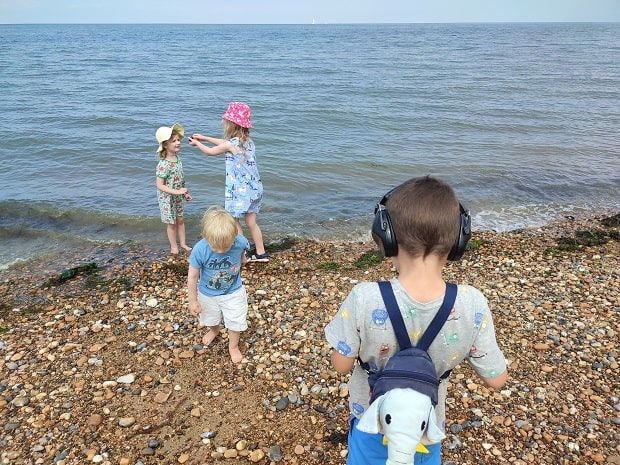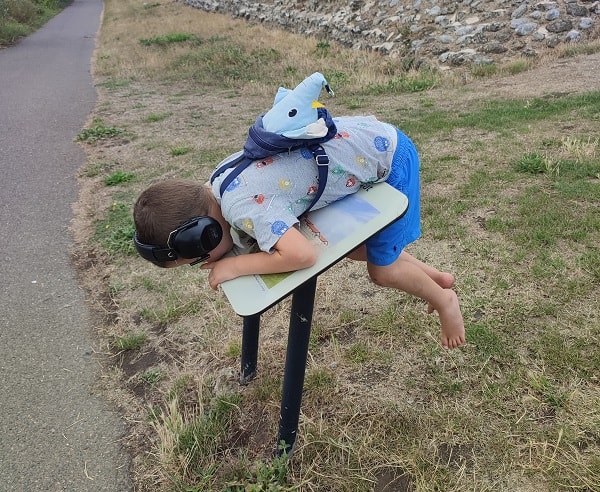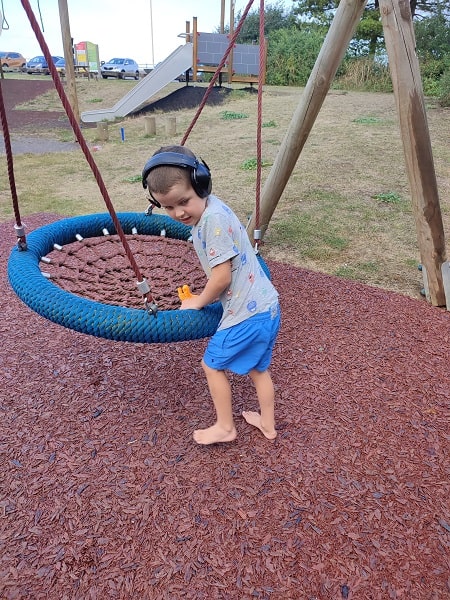
Claire Campbell is a Thanet mum-of-three and SEN teacher working in a specialist school in Broadstairs where all children have a diagnosis of autism as well as other severe and complex learning needs.
She teaches in KS1, lead on sensory integration, and is also PA for a child in the class, taking him out at weekends or in school holidays to support his mum getting respite and the youngster accessing activities.
Her monthly column aims to raise awareness and cultivate change:
Last month I wrote about my new year’s resolution shared with my three young children to try and support better community access for families with children with SEND. This month included a half term so it was an ideal opportunity to reflect on what our local area has on offer with regard to this.
First of all, however, a quick bit of bookkeeping! With his mum’s permission, I would like to introduce you to Beau. In my previous article I refer to Beau as ‘B’, perhaps in thinking that I was protecting Beau in giving him anonymity. Joanna Grace recently wrote in the winter 2022 Issue of PMLD LINK that we should ‘share their picture, say their name’. Children like Beau do not need to be anonymous, they need to be seen. The more they are seen in their communities the more learning, empathy and understanding can occur.

One of my favourite spaces to take Beau, that is not an exclusive SEN session, is Reculver Country Park – lots of parking on site, a good café with a tasty cake selection, a range of toilets including changing facilities, beautiful outside space rife with sensory exploration opportunities from the water and pebbles of the beach, to the rough brick and stone of the ruins for feeling, climbing and hiding. But one of the biggest plus points to this space is the large and varied play park.
I remember Reculver having several types of accessible swings before basket swings were really a thing. These days you can find a basket swing in most play parks. These support access for children with disabilities or other support needs. There is space to lie down or to have a friend or carer swing with you. There is easier access and more position options for swinging. These swings are really just the icing on the cake though when it comes to accessible play equipment. Does the roundabout have a step up to it to ride? Does the slide have space for a supporting person to slide down alongside a child? And does any of this matter if other parents awkwardly wait for you to act when your child drags their foot along the floor as the roundabout turns (and therefore continually slowing it down for the other riders)?
Well to the first two questions, it is a yes for Reculver. Fully accessible roundabout and slides. They also have other swings that are accessible, not just the standard basket swing, and that is quite unusual to find in a play park. And to the third question? Well my point in asking this question is to draw attention to the fact that barriers to accessibility are not just physical, tangible ones but they also come in the form of people and their attitudes.
This month, I went to the world’s first ‘relaxed venue’ – Battersea Arts Centre – for a wonderful ‘Super Sensory Share ‘ with lots of like-minded practitioners. There was lots of talk about access, where if you create a space that allows access for the person with the most barriers then all people with fewer barriers to access will also be able to access the space. Having bean bags and cushions in front of the lines of chairs meant that more people could access the talks in comfort. It did not have any negative impact on those able to access the talks in the traditional seating.

So what does this look like in a setting such as a play park? Well, as already mentioned, basket swings and roundabouts without a step up are accessible to all and do not make any difference to the play experience of those who already had access. But what about the differing play styles? I mentioned last month that Beau will often just want to jump up and down on the slide instead of slide down it. Is this an example of where giving Beau the access he needs to play in his desired way is actually preventing other children from enjoying the space? I think this can be what other parents feel and this is where more visibility and understanding could help.
All children will have different ways of communicating, different ways of exploring spaces, and different ways of playing. If we accept all these differing methods as being equally valid, then Beau jumping up and down on the slide is not seen as ‘strange’ or ‘wrong’ but it is just seen as play. Someone is playing on the slide right now; I will go and play on the roundabout instead. The play park is big enough to accommodate differing play styles, Reculver play park certainly is.
Reculver also offers events and workshops for children to enjoy that are of high quality and as a parent and a teacher I would certainly recommend them. I got in touch with the park to see if their half term slime making workshop would be suitable for a sensory seeker who would love the experience of making slime but would also be very likely to put all of the ingredients in his mouth.
Unfortunately the slime is not safe to ingest and so on this occasion I chose not to book on to this workshop. However, the most pleasing thing was that I was sent a response email asking if I had any suggestions on how to offer better inclusivity and I have offered to share recipes for slime and other fun, sensory and messy making activities that are all safe to ingest.
It is possible that, thanks to Beau, Reculver may be able to improve their inclusivity, however slightly. This feels like a significant step in our new year’s resolution. Well done Reculver – and well done Beau! And please do not forget to check in next month to follow our progress!

